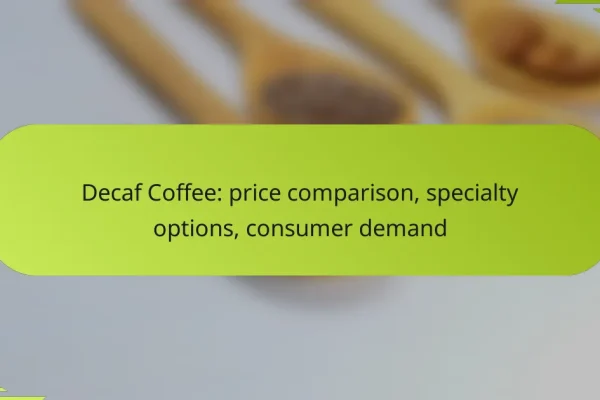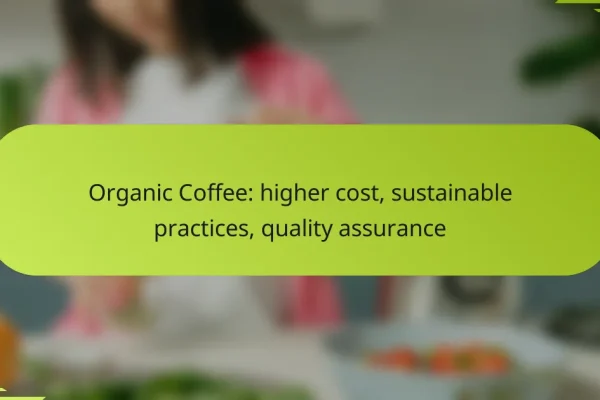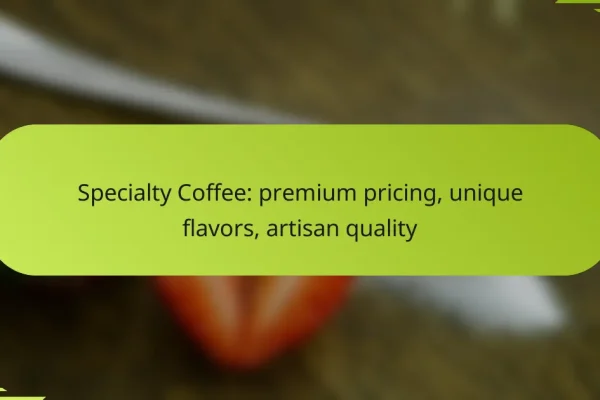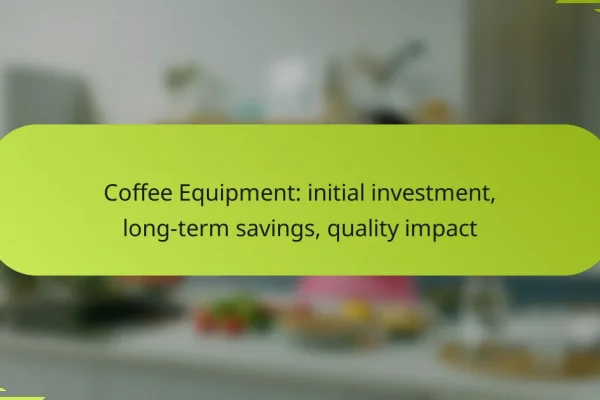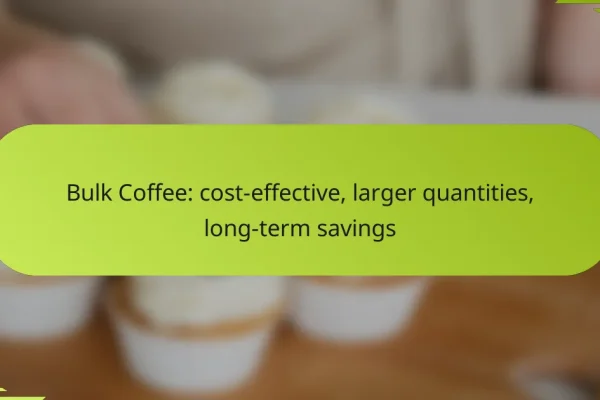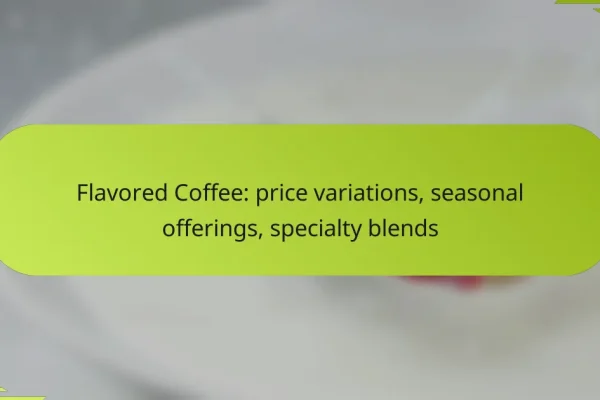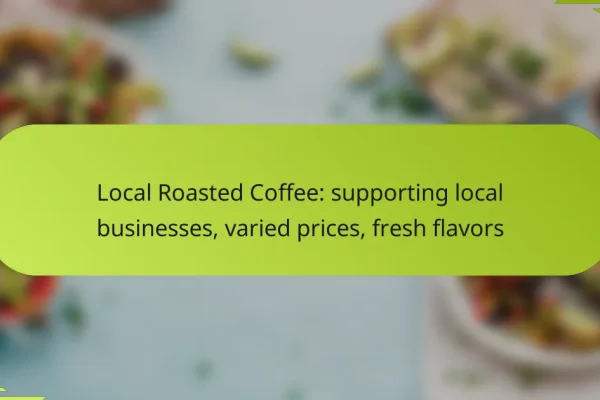What are the costs of popular coffee varieties in the US?
The costs of popular coffee varieties in the US vary significantly based on factors such as quality, sourcing, and production methods. Generally, prices can range from a few dollars for basic options to higher amounts for specialty and organic varieties.
Arabica coffee pricing
Arabica coffee is typically priced higher than other varieties due to its superior flavor profile and growing conditions. In the US, prices for Arabica beans usually range from around $10 to $20 per pound, depending on the specific origin and quality.
When purchasing Arabica coffee, consider factors such as roast level and processing method, as these can influence the final cost. Specialty Arabica coffees may command even higher prices, reflecting their unique characteristics.
Robusta coffee pricing
Robusta coffee is generally less expensive than Arabica, with prices typically ranging from $5 to $12 per pound in the US. This variety is often used in instant coffee and espresso blends due to its stronger flavor and higher caffeine content.
When evaluating Robusta pricing, keep in mind that its lower cost is often a trade-off for flavor complexity. However, it can be a budget-friendly option for those seeking a strong coffee experience.
Specialty coffee pricing
Specialty coffee, which includes high-quality Arabica beans often sourced from specific regions, can be significantly more expensive. Prices for specialty coffee can range from $15 to $30 per pound or more, depending on factors like rarity and production methods.
When buying specialty coffee, look for certifications such as Fair Trade or Direct Trade, which can impact pricing. These coffees often provide unique tasting notes and support sustainable farming practices.
Organic coffee pricing
Organic coffee typically costs more than conventional varieties due to the stringent farming practices required. In the US, organic coffee prices generally range from $12 to $25 per pound.
When considering organic coffee, check for certifications from recognized organizations to ensure the product meets organic standards. This can help justify the higher price point while supporting environmentally friendly practices.
Instant coffee pricing
Instant coffee is usually the most affordable option, with prices ranging from $3 to $10 per jar or pouch. This convenience factor makes it popular among consumers looking for quick preparation.
When purchasing instant coffee, consider the brand and quality, as these can affect flavor and overall satisfaction. While cheaper options exist, investing in a higher-quality instant coffee can enhance your experience without breaking the bank.
How do coffee variety costs compare globally?
The costs of different coffee varieties vary significantly across the globe due to factors such as production methods, climate, and market demand. Understanding these variations helps consumers and businesses make informed purchasing decisions.
Arabica prices in Colombia
In Colombia, Arabica coffee is highly prized for its quality and flavor, often commanding higher prices than other varieties. Prices can range from around 1.50 to 3.00 USD per pound, depending on the harvest and market conditions.
Colombian coffee growers face challenges such as fluctuating climate conditions and pests, which can impact supply and ultimately prices. Buyers should consider these factors when sourcing Colombian Arabica.
Robusta prices in Vietnam
Vietnam is one of the largest producers of Robusta coffee, which is generally less expensive than Arabica. Prices for Robusta can range from 0.80 to 1.50 USD per pound, making it a cost-effective choice for many coffee blends.
The lower price of Robusta is often attributed to its higher yield and resilience to pests, but it is also considered to have a stronger, more bitter flavor profile. This variety is commonly used in instant coffee and espresso blends.
Specialty coffee prices in Europe
Specialty coffee in Europe can vary widely in price, often ranging from 3.00 to 10.00 EUR per cup, depending on the café and the specific coffee variety. This segment focuses on high-quality beans sourced from specific regions, often with unique flavor profiles.
Consumers should be aware that specialty coffee prices reflect not only the quality of the beans but also the brewing methods and the café’s location. Supporting local roasters can provide access to unique offerings while helping to sustain local economies.
What factors influence coffee variety pricing?
The pricing of coffee varieties is influenced by several key factors, including growing conditions, market demand, processing methods, and import tariffs. Understanding these elements can help consumers and businesses make informed decisions about coffee purchases.
Growing conditions
Growing conditions play a crucial role in determining the price of coffee varieties. Factors such as altitude, climate, and soil quality can significantly impact the flavor profile and yield of coffee beans. For instance, beans grown at higher altitudes often develop more complex flavors, which can lead to higher market prices.
Additionally, regions known for specific coffee varieties, like Colombian or Ethiopian coffees, may command premium prices due to their unique growing conditions. Buyers should consider these geographical influences when evaluating coffee costs.
Market demand
Market demand directly affects coffee pricing, with popular varieties often fetching higher prices. Specialty coffees, which are in high demand among consumers seeking unique flavors, can see prices that are significantly higher than standard blends. Trends in consumer preferences, such as the rise of single-origin coffees, can also shift demand and influence pricing.
Monitoring market trends and consumer behavior can provide insights into which coffee varieties may become more valuable over time. Buyers should stay informed about emerging preferences to make strategic purchasing decisions.
Processing methods
The methods used to process coffee beans after harvesting can greatly influence their final price. Common processing methods include washed, natural, and honey processing, each imparting different flavors and qualities to the beans. For example, natural processing often results in sweeter, fruitier flavors, which can be more desirable and thus more expensive.
Investing in higher-quality processing techniques can enhance the overall value of the coffee, making it essential for producers to choose methods that align with their target market. Understanding these processing nuances can help buyers assess the quality and pricing of various coffee options.
Import tariffs
Import tariffs can significantly impact the final cost of coffee varieties in different markets. Countries may impose tariffs on imported coffee to protect local producers, which can lead to higher prices for consumers. For example, tariffs in the European Union can vary widely, affecting the overall cost of coffee imports from different regions.
Buyers should be aware of the tariff structures in their respective countries and how they may affect coffee pricing. Staying informed about trade agreements and tariff changes can help consumers and businesses anticipate price fluctuations in the coffee market.
How to choose the right coffee variety for your budget?
Choosing the right coffee variety for your budget involves balancing flavor preferences, brewing methods, and quality grades. Consider what you enjoy most in coffee and how much you are willing to spend, as prices can vary significantly based on these factors.
Assessing flavor profiles
Flavor profiles are crucial when selecting a coffee variety. Different beans exhibit unique tastes, influenced by their origin, processing methods, and roast levels. For instance, Ethiopian coffees are often fruity and floral, while Brazilian varieties may have nutty and chocolatey notes.
To find a coffee that fits your palate and budget, consider trying sample packs or smaller quantities of various types. This approach allows you to explore flavors without a significant financial commitment.
Evaluating brewing methods
Your preferred brewing method can impact the type of coffee you should choose. For example, espresso requires finely ground coffee and specific beans that can withstand high pressure, while a French press works well with coarser grinds and a broader range of beans.
Additionally, consider the cost of equipment and the time required for each method. Some brewing techniques, like pour-over, may require more skill and time but can yield exceptional flavor, while others, like single-serve machines, offer convenience at a higher price point.
Understanding quality grades
Coffee quality grades can significantly affect price and flavor. Specialty coffees are graded based on factors like aroma, acidity, and body, often commanding higher prices. In contrast, commercial-grade coffees are more affordable but may lack complexity.
Familiarize yourself with grading systems such as the Specialty Coffee Association’s scoring, which ranges from 80 to 100 points. This knowledge can help you make informed decisions about which varieties offer the best value for your budget while still meeting your taste preferences.
What are the price trends for coffee varieties?
Price trends for coffee varieties fluctuate based on factors such as supply, demand, and market conditions. Generally, specialty coffees tend to command higher prices compared to mass-produced options, reflecting their quality and unique characteristics.
Historical price analysis
Historically, coffee prices have experienced significant volatility, influenced by climate conditions, geopolitical events, and changes in consumer preferences. For instance, Arabica coffee prices have been known to rise sharply during droughts in major producing countries like Brazil.
Over the past few decades, the average price of coffee has ranged from low tens of cents per pound to over $3 per pound at peak times. Understanding these historical trends can help consumers and businesses anticipate future price movements and make informed purchasing decisions.
When evaluating coffee prices, consider the type of coffee, its origin, and the growing conditions. Specialty coffees often reflect a premium price due to their unique flavor profiles and limited availability, while commodity coffees typically have lower price points.
